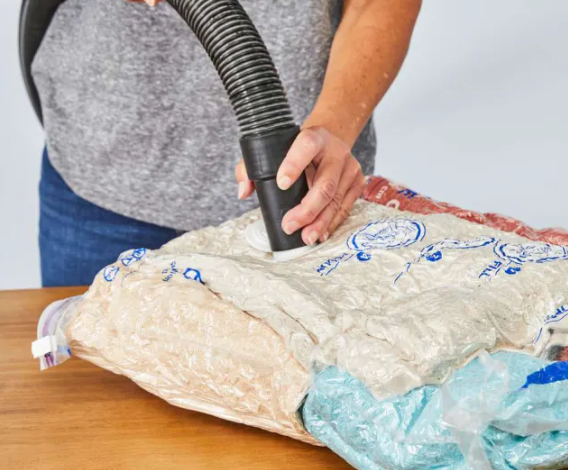
How to Protect Wool from Moth Damage: Essential Tips for Storage and Prevention
Moths are notorious for damaging wool garments, but with the right preventative measures, you can protect your clothing and keep it in excellent condition. Moths are drawn to wool due to its protein content, and it’s the larvae, not the adult moths, that cause the damage. In this guide, we’ll walk you through the best practices for storing wool, keeping moths at bay, and ensuring your garments remain moth-free.
Why Moths Are Drawn to Wool
Moths are attracted to wool because of keratin, a protein naturally found in animal fibers such as wool, cashmere, and silk. It’s not the adult moths that cause the damage, but rather the larvae, which feed on these fibers as they develop. Wool garments are most vulnerable when not being worn, particularly during the off-season, as moth larvae thrive in dark, undisturbed spaces like the back of closets or drawers. This is why it’s essential to rotate your wardrobe regularly and inspect your wool clothing for any signs of moth activity.
Identifying Moth Damage in Wool
The earlier you spot signs of moth damage, the easier it is to prevent further destruction. Look for the following signs:
- Small Holes: These are the most obvious sign of moth damage. Moths create irregular holes as they feed on the fabric.
- Larval Casings: Moth larvae leave behind silken tubes or cases that can often be found on your clothes.
- Webbing: Similar to spider webs, moths may leave fine webbing on the fabric.
- Adult Moths: Seeing adult moths near your wool items could indicate an infestation.
Regularly inspecting your wool garments, especially those stored for long periods, will help you catch any issues before they escalate.
Cleaning Wool Before Storing
Moths are particularly attracted to dirty wool garments, so cleaning them before storage is essential. Sweat, body oils, and food residues all attract moths, making thorough cleaning a vital step. Here’s how to properly clean your wool items:
- Hand Washing: For delicate wool, hand wash with a mild detergent designed for wool. Avoid wringing the garment, as it can stretch the fibers.
- Machine Washing: If your wool items are machine washable, use a gentle wool cycle with cold water. Place garments in a mesh laundry bag to prevent stretching or distortion.
- Drying: Always air dry wool garments by laying them flat on a towel. Avoid hanging them to dry, as the weight of the wet fabric can cause stretching.
Proper cleaning ensures your wool garments are free from dirt and oils, reducing the risk of attracting moths during storage.
Best Storage Methods for Wool
Correct storage plays a significant role in preventing moth damage. Here are the best practices for storing wool items:
- Airtight Containers: One of the most effective ways to protect wool garments is by storing them in airtight containers or vacuum-sealed bags. This keeps moths and larvae out while preserving the integrity of the wool.
- Breathable Garment Bags: For wool coats or suits that need to be hung, use breathable garment bags made of cotton or muslin. Avoid plastic bags, as they trap moisture and can lead to mildew.
- Cool, Dry Spaces: Store wool garments in cool, dry areas. Moths thrive in warm, humid environments, so avoid placing wool clothing in attics or basements where temperature and humidity can fluctuate.
- Seasonal Rotation: To prevent moths from taking over your wool items, regularly rotate your wardrobe and ensure items in storage are properly maintained throughout the year.
Natural Moth Repellents
While traditional mothballs are effective, they contain harmful chemicals that can be toxic. Fortunately, natural repellents are a safe and effective alternative. Here are some options to consider:
- Cedar: Cedarwood is one of the best natural moth repellents due to its oils, which deter moths. Use cedar blocks, rings, or sachets in your closet or storage bins to keep moths away.
- Lavender: Moths dislike the smell of lavender, making it an excellent option for wool storage. Place dried lavender sachets or cotton balls soaked in lavender essential oil in your storage areas.
- Herbs: Other herbs like rosemary, thyme, and cloves can also act as moth deterrents. Use dried herbs in sachets to naturally protect your wool garments from moths.
These natural alternatives not only keep moths at bay but also leave your storage areas smelling pleasant.
Maintaining Moth-Free Storage Spaces
Once your wool garments are safely stored, it’s essential to maintain a clean, moth-free environment. Follow these tips to keep your storage areas pest-free:
- Regular Vacuuming: Moths often lay their eggs in hidden areas like closet corners and baseboards. Vacuuming these areas regularly helps remove eggs and larvae before they have a chance to hatch.
- Airing Garments: Every few months, air out your wool items, especially those in long-term storage. Moths thrive in dark, undisturbed spaces, so airing out your clothes disrupts their environment.
- Cedar Hangers: Consider replacing regular hangers with cedar hangers to provide an extra layer of protection. Cedar’s natural oils help repel moths, ensuring your wool garments are safe.
- Regular Inspections: Periodically check your stored wool clothing for any signs of moth activity. Early detection allows you to take action before the problem spreads.
By maintaining a clean and vigilant storage routine, you can protect your wool garments from moths for years.
What to Do If You Find Moth Damage
If you discover moth damage on your wool items, act quickly to prevent further harm. Here’s what to do:
- Isolate Affected Garments: Remove any damaged wool items from your wardrobe to prevent further contamination.
- Freeze the Clothes: Place affected garments in a plastic bag and freeze them for 48-72 hours. This will kill any remaining larvae or eggs.
- Clean and Repair: After freezing, clean the garments as per care instructions. Small holes may be repairable with needle and thread, or you can take the item to a tailor.
- Deep Clean the Storage Area: Vacuum and clean your closet and drawers thoroughly to eliminate any remaining eggs or larvae.
By acting quickly, you can salvage your wool items and prevent the damage from spreading to other garments.
Conclusion
Moths don’t have to be a problem for your wool wardrobe if you take the proper precautions. By understanding why moths are attracted to wool, keeping your garments clean, and using natural repellents, you can protect your clothes from moth damage. Regular maintenance of your storage areas and seasonal wardrobe rotation will further safeguard your wool garments. With these tips, you can ensure your wool items stay in excellent condition for years to come.






